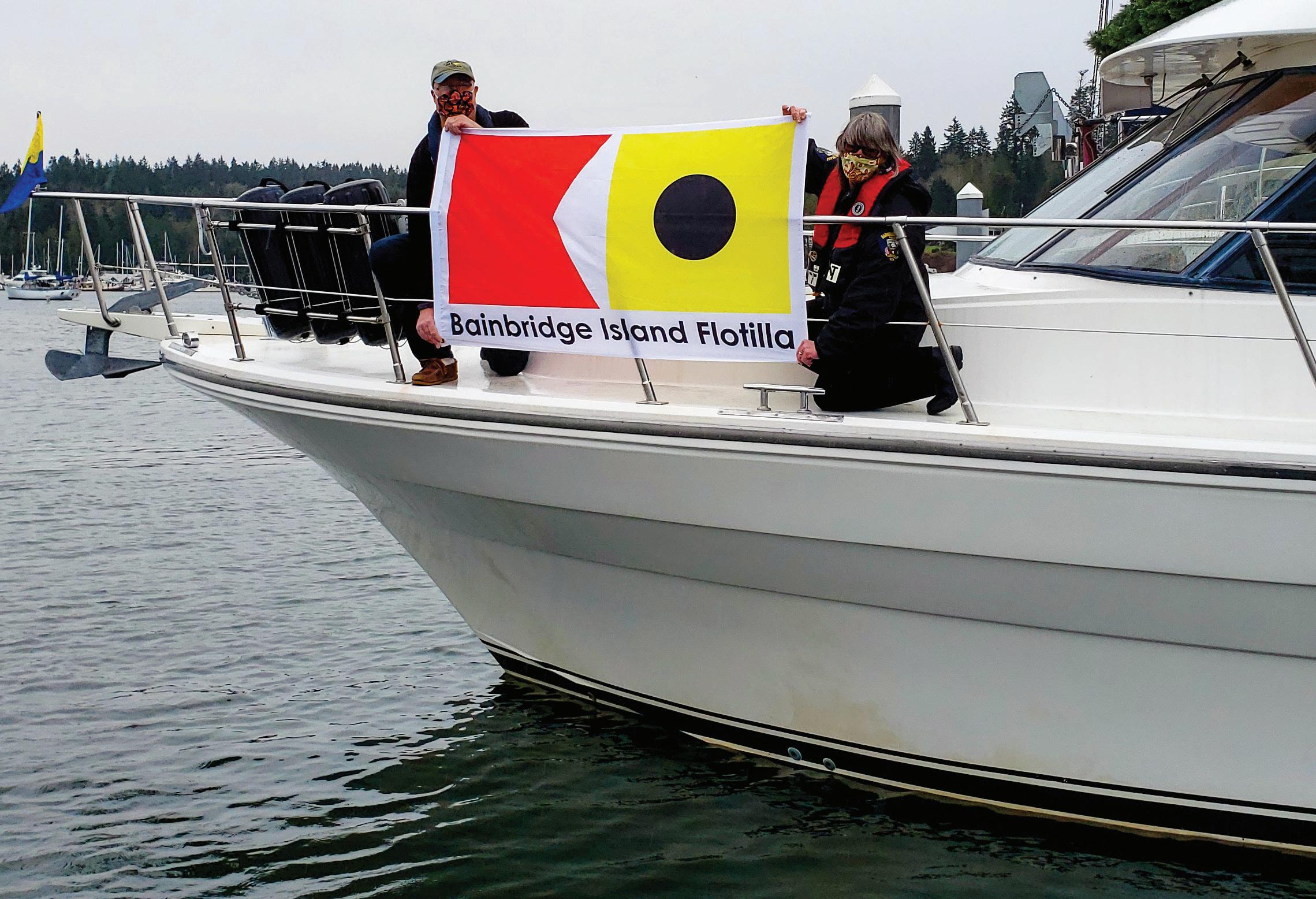ALL HAIL!
by Charlie Macaulay
RACING RULES ABOUT HAILING ANOTHER BOAT
T
here are many misconceptions regarding the requirements for hailing another boat during a sailboat race. Let’s try to simplify things a bit and provide some practical rules and tips. Only two of the Racing Rules of Sailing (RRS) require a hail: 20 and 61.1(a). We’ll address them in reverse order. RRS 61.1(a) is “in the sixties,” so you know it has something to do with protests or redress. It is the requirement that you hail the word “Protest” to the other boat(s), “at the first reasonable opportunity” following “an incident in the racing area.” Note that you must use the word “Protest.” Yelling “do your turns” or “you fouled me” or other words to that effect, without the word “Protest” does not meet the requirement of the rule. The only exception to this is when the boat being protested is beyond hailing distance. In that case, while you don’t need to hail, you still need to inform the other boat “at the first reasonable opportunity.” Just filing the protest is not sufficient. You need to seek out the other party(ies) and let them know you are protesting. And if someone hails “protest” at you, there is no requirement for a return hail. If you think you may have broken a rule, your obligation under the rules is to take the appropriate penalty. If you don’t think you may have broken a rule, no response is needed. In other words, keep it civil. RRS 20 gives the requirements for when you need room to tack at an obstruction. You must be sailing close hauled or
48º NORTH
Photo by Jan Anderson.
above to invoke this rule (RRS 20.1(b)). You also can’t use it on a boat that is fetching the next mark (which usually only happens when sailing a marks-to-starboard course). Note there are no provisions for obtaining room to jibe at an obstruction. When the boats are sailing downwind, RRS 19 applies. Unlike RRS 61.1(a), RRS 20.1 does not provide specific words to use when hailing for room to tack. But it does include a couple of important requirements with respect to the hail. First, the hail must be made early enough to give the hailed boat time to respond (RRS 20.2(a)). Further, if the boat you are hailing needs to hail another boat, and they need to hail another boat (and so on), you need to allow time for the hails to proceed all the way up the chain (RRS 20.3). This is critical, so think ahead and don’t expect that you will get room to tack when you hail only seconds before you would have a collision. RRS 20.4 is a new rule for 2021-24 and adds another requirement; if you’re sailing in conditions where your hail may not be heard, you must also make a signal that clearly indicates you need to tack. This usually means an arm gesture such as repeatedly pointing to windward. The Notice of Race can prescribe specific means of alternate communication in this instance — usually a specific hand signal. But other signals can be used for specific types of boats, e.g., radio call when sailing very large boats. Also unlike RRS 61, RRS 20 requires one of two specific responses if you are hailed for room to tack:
42
MARCH 2021






